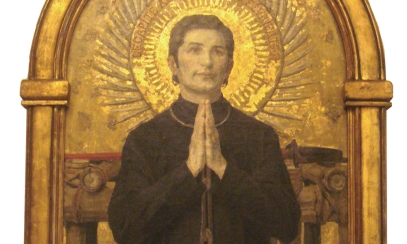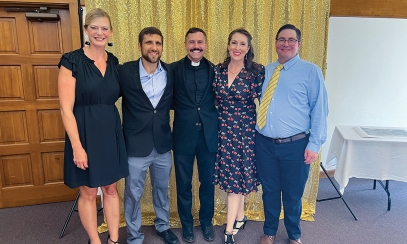
Fired by Scripture
My friend did not intend to set the field on fire. She keeps bees and smoking the hive calms their activity while she collects the honey. A small brazier — the size of a watering can — carries the fire. After she smoked the hives, she set the brazier on the tailgate of the pickup. An unexpected gust of wind blew it over and the scattered embers ignited the dry summer grass. Fortunately, a neighbor happened by at just that moment and alerted the local fire department, who managed to save the hives and contain the rapidly spreading blaze, leaving relatively little damage. The outcome could have been much worse. Following the incident, my friend admitted, “I have a whole new respect for grass fires.”
We hear about fire throughout the Old and New Testaments. Fire rains down in judgment on Sodom and Gomorrah. (Gn 19:24) Fire flares and consumes Elijah’s water-soaked sacrifice on Mt. Carmel when he prays to the true God. (1 Kgs 18:38) Jesus himself invokes images of a fiery hell when describing the fate of proverbial weeds at the end of time. (Mt 13:40-42) Tongues of fire embody the Holy Spirit and descend on the apostles at Pentecost. (Acts 2:3-4)
A curious side note in the Genesis story of Abraham and Isaac describes how father and son travel to Mt. Moriah with Isaac carrying the wood for the sacrifice and Abraham carrying “… the fire and the knife.” (Gn 22:6) Exactly how did one carry fire safely in ancient times? Among itinerant people, fire-bearers had to be ready to jump-start the next campfire, so likely some sort of metal pan or clay pot, or even an animal horn packed with sand, was necessary to transport live coals. The brazier my beekeeper friend employed is probably not all that different from vessels used in scriptural times.
Buddha is credited with saying, “Just as a candle cannot burn without fire, men cannot live without a spiritual life.” Nothing illustrates that truth more poignantly than the darkened church at the Easter Vigil when Christ’s light is passed to all present from the single paschal candle. That precious flame is one we do not want extinguished. Once internalized, we protect it with the same care shown by Old Testament fire-bearers appointed to keep the coals glowing.
If our spiritual flame goes out, we are reduced to nothing more than cold beeswax — inert and decorative but otherwise practically useless.
Think about the basic rules of campfire safety. Campers learn to harness the potential of fire to accomplish good purposes such as illuminating, heating, cooking or even inspiring. Likewise, our spiritual flame can spread Christ’s light and love. Campfires also serve as protection against dangerous wildlife. In the same way, a healthy spiritual flame can ward off dangers posed by a predatory culture or evil influences.
Guarding our flame requires a healthy respect for fire’s power. We do not want the fire to get away from us and lead to harmful results — like what happened when my friend’s brazier tipped over. Such mishaps demonstrate the unpredictability of the world around us. Always keep in mind that when it comes to guarding fire, neglect is not an option. If we value our spiritual lives, we will nurture Christ’s sacred flame within us and monitor it carefully.
My beekeeper friend exemplifies these two aspirations. She tends her Christ flame every day through prayer, reading Scripture, journaling and contemplation. She guards her flame by governing her speech, exercising patience and practicing kindness. She demonstrates love through action as she cares for those in her household, including her elderly mother, and sees to their needs. Anyone who meets her can detect the divine presence she radiates. She is deeply faithful but not perfect, as the episode with the grassfire illustrates.
Is your Easter candle still burning on the inside? Are you tending your Christ flame carefully, never letting it go out or get away from you? In today’s troubled and broken world, if we allow our flames to shine as beacons, we become true ambassadors of Christ’s divine love.
Louis A. Gamino is a clinical psychologist at Baylor Scott White Health and a member of St. Luke Parish in Temple. Find more about him at www.LouisGamino.com.



